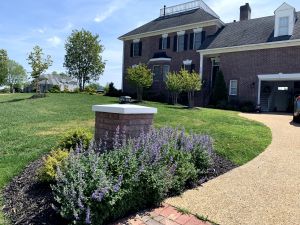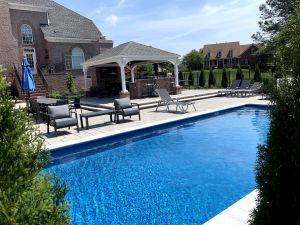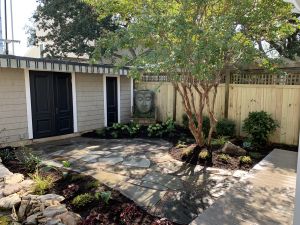Where to plant trees on your property…
-
-
Planting trees on your property can be a great way to add value and beauty to your home. When choosing where to plant trees, it's important to consider the size of the tree, the amount of space you have, and the climate in your area. Make sure to choose a species of tree that will thrive in the climate, soil, and space you have available. Plant the tree in an area that will give it enough room to grow, so it has adequate sunlight and water. If you're planting a large tree, make sure to plant it at least 15 feet away from your home to avoid any potential damage to your foundation. Additionally, you can use mulch around the base of the tree to help it retain moisture and to prevent weeds from growing around it.
A large deciduous shade tree should be placed roughly 15 feet from your house on the southwest side. In the summer the tree will provide necessary shade to your house from the sun and in the winter the tree will lose its leaves allowing the afternoon sun to warm your house. This tip will decrease your utility bills!
Place large evergreen shrubs or trees along your property line to provide a wind break and privacy. Examples of these trees and shrubs are eastern red cedar, cryptomeria, Autumn Brilliance Serviceberry, and River Birch. Do not place these close to your house as they tend to grow very large.
Ornamental trees- There is such a variety of trees to choose from. Ornamental trees should be placed anywhere you want to add showy beauty and color. Small ornamental trees are often used to anchor landscape beds around your house, property line, and entry way.
-

Evergreen VS. Deciduous
-
When deciding whether to use evergreen or deciduous trees, it is important to consider your climate and the purpose for which you are planting the trees. Evergreens are best suited for climates with cold winters, as they maintain their foliage year-round. Deciduous trees, on the other hand, are better suited for warm climates, as they lose their foliage in the winter and come back to life in the spring. Depending on the purpose of the trees, this could be an important factor when making your decision. If you are looking for shade, evergreens are a better choice as they provide coverage year-round, whereas deciduous trees provide shade during the summer and lose their foliage in winter. If you are looking for a decorative addition to the landscape, deciduous trees may be a better option as they often display beautiful fall colors. Ultimately, it is important to consider the climate and the purpose of the trees when deciding which type of tree to use.

3 Trees For Fall Foliage
If you're looking for a few excellent trees to provide beautiful fall foliage, here are three of my favorites:
- Sugar Maple – this gorgeous tree is well-known for its vibrant red and orange leaves in autumn and grows best in zones 3-8.
- Red Oak – this majestic tree also provides a stunning show of red and orange leaves in the fall and is ideal for zones 4-8.
- Ginkgo – this unique tree has fan-shaped leaves that turn bright yellow in the fall and grows best in zones 4-9.
4 Trees For A Pop Of Color
Colorful trees can provide a brilliant pop of color in your landscape beds. Many trees get too large to be planted close to a house so be aware of the size of tree you are choosing. Here are 4 trees that will stay 12-15′ or less.
- Japanese Maple 'Crimson Queen' or 'Virdis'. Not only does their color provide interest but so does their leaf shape.
- Weeping Redbud 'Cascading Hearts'. With heart-shaped leaves that "cascade" down in a true weeping form this tree is full of lavender/pink blooms in early spring. This tree is great for small spaces as it tops out at about 6-8′
- Crape Myrtles 'Tonto' 'Acuma' 'Sioux'. Who doesn't love a good Crape Myrtle? These sun loving trees bloom late spring until September! They have multiple gorgeous cinnamon bark stems and are always breath taking when they are in bloom.
- Chaste Tree 'Blue Diddley' 'Shoal Creek'. These trees offer luscious purple blooms that all the pollinators love! They tend to attract humans too with their aromatic smell. These trees grow pretty fast which is great for the landscapes that want to look well established quickly. Just watch for the Shoal Creek variety as they can grow to be 12′ in height and width.

Trees can add beauty and value to your landscaping. They can create a natural and inviting atmosphere for your outdoor space. Trees provide much-needed shade during the hot summer months and can also act as a windbreak to protect your home from cold winter winds. Trees can also help reduce air and noise pollution, absorb carbon dioxide, and provide a habitat for wildlife. Adding trees to your landscaping can be a great investment for your home and can be enjoyed for years to come.

